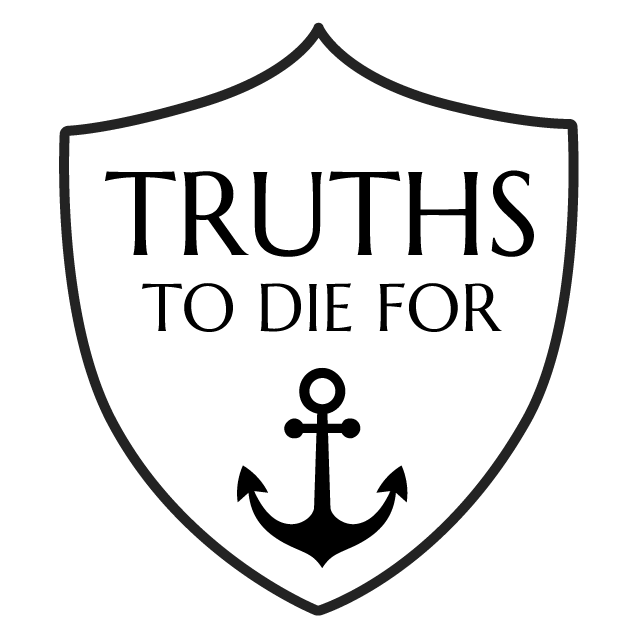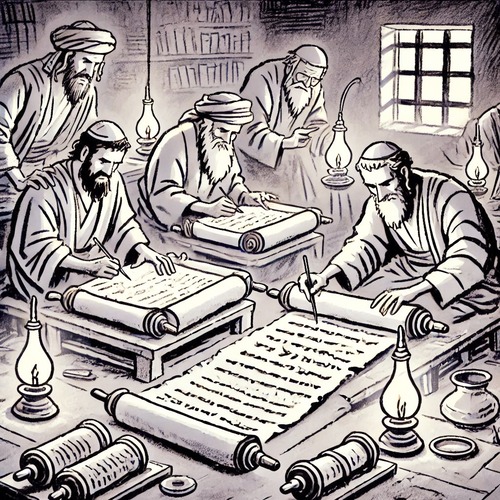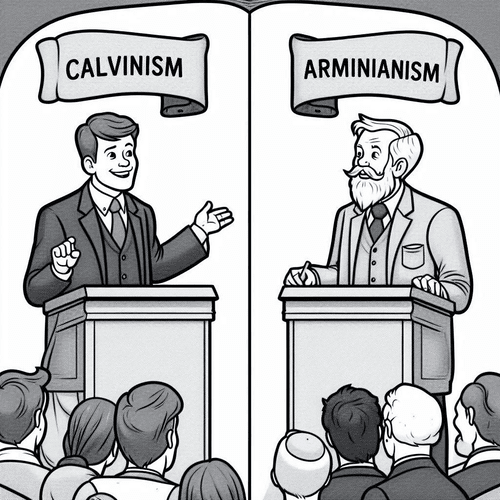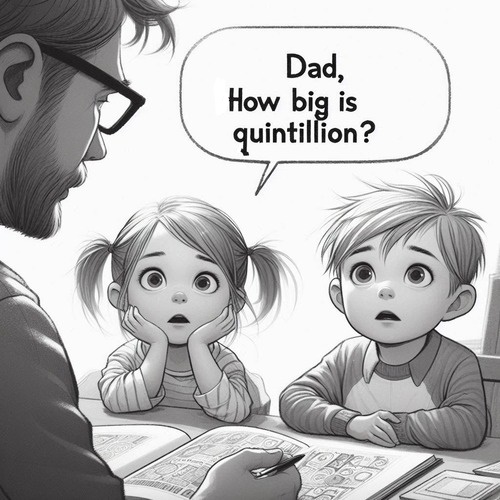The Documentary Hypothesis: Who Really Wrote the Torah?
Discussions on the origins of the first five books of the Bible (the Torah or Pentateuch), tend to generate much debate around the Documentary Hypothesis. Traditional Jewish and Christian, even Reformed beliefs have long held that Moses wrote the Torah—and that he received divine inspiration to record everything from creation to his own death. However, Documentary Hypothesis proposes the Torah is a masterful compilation of four main sources, each with its own distinct style, vocabulary, and theological emphasis…
DOCUMENTARY HYPOTHESIS: HOW IT DEVELOPED
The seeds of this theory were planted in the 18th century when Jean Astruc, a French physician, noticed Genesis used two different names for God—YHWH (translated as “LORD” in many English Bibles) and Elohim. This observation led him to suggest Moses had used multiple source documents. However, it was Julius Wellhausen who, in the 19th century, developed these initial observations into a comprehensive theory that would revolutionise biblical scholarship.
Wellhausen’s work systematically identified four main sources, now commonly known by their initials: J (Yahwist), E (Elohist), D (Deuteronomist), and P (Priestly). Each source represents different historical periods and theological perspectives in ancient Israel’s history.
JEDP—THE FOUR TRADITIONAL SOURCES
- The Yahwist (J) Source: Dating to around the 10th century BCE in the southern kingdom of Judah, the Yahwist source is characterised by its use of the divine name YHWH. This source presents God in notably anthropomorphic terms—walking in the Garden of Eden, closing Noah’s ark, and wrestling with Jacob. The J source offers vivid, dramatic narratives and shows particular interest in the southern tribes and traditions.
- The Elohist (€) Source: Emerging from the northern kingdom of Israel around the 9th century BCE, the Elohist source primarily uses “Elohim” for God and presents God in more abstract terms, often communicating through dreams and angels rather than direct interaction. This source emphasises moral and ethical concerns and shows special interest in the northern tribes, particularly Joseph.
- The Deuteronomist (D) Source: This source is primarily found in the book of Deuteronomy and shows strong connections to the religious reforms of King Josiah in the 7th century BCE. It emphasises centralised worship in Jerusalem, the covenant relationship between God and Israel, and the importance of following divine law. Its style is distinctive, featuring lengthy speeches and a focus on teaching and instruction.
- The Priestly (P) Source: The youngest of the four sources, dating to the exilic or post-exilic period (6th-5th centuries BCE), the Priestly source focuses on ritual, law, and genealogy. It presents a more systematic view of history, with particular attention to chronology and organizational details. This source is responsible for the creation account in Genesis 1, the elaborate instructions for the tabernacle, and much of the legal material in Leviticus.
EVIDENCE CITED IN SUPPORT OF MULTIPLE AUTHORSHIP
Several lines of evidence are cited in support of the Documentary Hypothesis:
Duplicate Narratives: The Torah contains multiple versions of the same stories, such as two creation accounts, two versions of the flood narrative, and three instances where a patriarch presents his wife as his sister. The duplicate accounts often show different theological emphases and vocabulary patterns—prompting Wellhausen to suggest these are consistent with multiple sources.
The varying writing styles: the Priestly source tends toward formal, structured writing with repeated phrases, while the Yahwist offers more dramatic, anthropomorphic narratives.
Varying theological perspectives emerge in different sections. The Deuteronomist source, for example, emphasises the covenant and central worship, while the Priestly source focuses on ritual purity and sacrificial details.
SCHOLARLY DEBATES AND CHALLENGES
While the Documentary Hypothesis remains influential, it has faced various challenges. Conservative scholars maintain traditional Mosaic authorship: they argue apparent inconsistencies can be explained through careful interpretation. Others accept multiple sources but question the neat JEDP categorisation.
What’s the predominant view of the Documentary Hypothesis within Reformed theological traditions? The Reformed tradition has historically been more sceptical of the Documentary Hypothesis, unlike mainstream biblical scholarship. Many Reformed scholars maintain a more conservative view of Mosaic authorship. While some Reformed scholars acknowledge editorial updates and later additions to the original Mosaic text (such as the account of Moses’ death), they generally reject the full JEDP framework as potentially undermining the Torah’s unity and divine inspiration. However, there is a growing minority within Reformed academia, particularly in Reformed academic institutions, who accept modified versions of the Documentary Hypothesis while maintaining strong views of biblical authority and inspiration, arguing that divine authorship can work through multiple human authors just as effectively as through one.
CONTEMPORARY RELEVANCE: EVALUATING THE EVIDENCE
Some commentators suggest understanding the Documentary Hypothesis is crucial for biblical scholarship and religious studies. In their view it helps explain the Torah’s rich theological diversity and provides insights into ancient Israel’s religious development.
While debate continues about its details, its basic observation—that the Torah represents multiple perspectives and traditions skilfully woven together—remains influential in understanding this foundational text.
Whether one accepts or rejects the theory, engaging with it enriches our understanding of the Torah’s complexity and the sophisticated literary and theological traditions that shaped it. It reminds us the sacred texts often have complex histories that reflect the communities that preserved and transmitted them.
THE DOCUMENTARY HYPOTHESIS—RELATED FAQs
What key objections do traditional Reformed scholars raise? Traditional Reformed scholars raise several significant objections to JEDP theory, with their primary concern being that it appears to contradict Jesus and the New Testament writers’ direct attribution of the Torah to Moses (such as in Mark 12:26 and John 5:46-47). They also argue the Documentary Hypothesis arose from Enlightenment-era scepticism toward supernatural revelation rather than from purely textual evidence, and that apparent contradictions or different divine names can be explained through careful exegesis without requiring multiple authors.
Another objection focuses on the theory’s potential undermining of the Torah’s unity and coherence, with Reformed scholars arguing that the text displays a singular theological vision and literary structure that would be difficult to achieve through the piecing together of disparate sources over centuries. Finally, they contend that the theory’s constant revision and scholarly disagreement over precise source divisions suggests its foundations may be less secure than proponents claim.
- Does accepting the Documentary Hypothesis mean rejecting divine inspiration? Not necessarily. Many scholars and religious thinkers maintain that divine inspiration can work through multiple authors just as effectively as through a single author. Some even argue multiple authorship demonstrates divine wisdom in preserving various theological perspectives and cultural understandings. The question of inspiration operates on a different level from the question of how the text came to be in its current form.
- What remains unchanged whether or not we accept multiple authorship? The Torah’s fundamental ethical teachings, its core narrative of God’s relationship with Israel, and its central role in Jewish and Christian traditions remain constant regardless of authorship views. The text’s literary artistry, profound theological insights, and historical influence are independent of how it was composed. Moreover, its impact on human civilisation and its role as a source of religious and moral guidance continue unchanged.
- How does the Documentary Hypothesis relate to other ancient Near Eastern literature? Ancient Near Eastern texts often show evidence of multiple sources and editing processes similar to what the Documentary Hypothesis proposes for the Torah. The Gilgamesh Epic, for instance, exists in several versions that were combined over time. This suggests the development process proposed by the Documentary Hypothesis was actually quite common in ancient literary practices.
- How do archaeological discoveries support or challenge the dating of these sources? Archaeological findings have provided insights into the historical contexts of different sources, sometimes confirming and sometimes challenging traditional Documentary Hypothesis dating. For example, discoveries showing sophisticated writing in early Israel have questioned whether the sources must be as late as originally proposed. However, archaeological evidence of religious reforms during Josiah’s reign has supported the dating of the Deuteronomist source.
How do passages in the Torah written after the time of Moses support the Documentary Hypothesis? Several passages in the Torah are clearly post-Mosaic: they describe events that occurred after Moses’s death. They reflect later historical perspectives, supporting the theory of multiple authors writing across different time periods. The most obvious example is the account of Moses’s own death and burial in Deuteronomy 34, including the statement that “no one knows his burial place to this day”—a phrase suggesting significant time had passed. Other examples include Genesis 36:31 referring to kings who ruled in Edom “before any king reigned over the Israelites,” appearing to be written from a perspective during or after the Israelite monarchy, and place names being updated to their later equivalents (like the city of Dan, named centuries after Moses). These anachronistic details, combined with references to later historical situations and use of place names from later periods, suggest at least some portions of the Torah were written or edited well after the time of Moses, aligning with the Documentary Hypothesis’s proposal of multiple authors writing across several centuries.
Editor's Pick
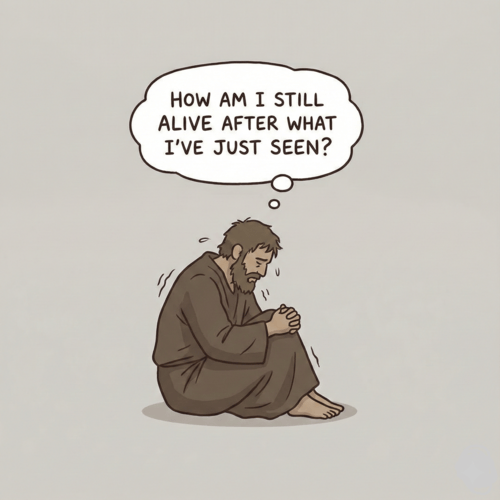
The Throne-Room Vision: Who Did Isaiah See?
The scene is unforgettable: Isaiah stands in the temple, and suddenly the veil between heaven and earth tears open. He [...]
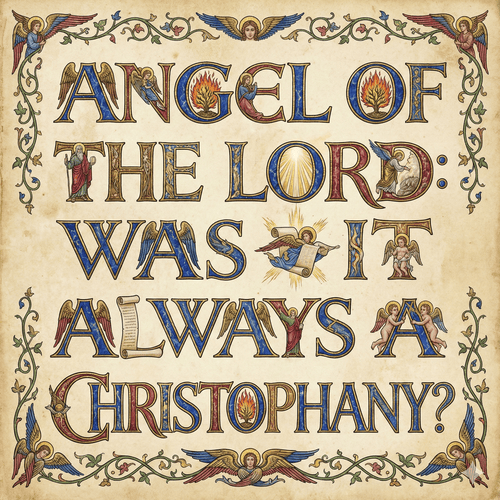
The Angel of the Lord: Can We Be Certain It Was Christ All Along?
Throughout the Old Testament, a mysterious figure appears: the Angel of the LORD. He speaks as God, bears God’s name, [...]
SUPPORT US:
Feel the Holy Spirit's gentle nudge to partner with us?
Donate Online:
Account Name: TRUTHS TO DIE FOR FOUNDATION
Account Number: 10243565459
Bank IFSC: IDFB0043391
Bank Name: IDFC FIRST BANK

